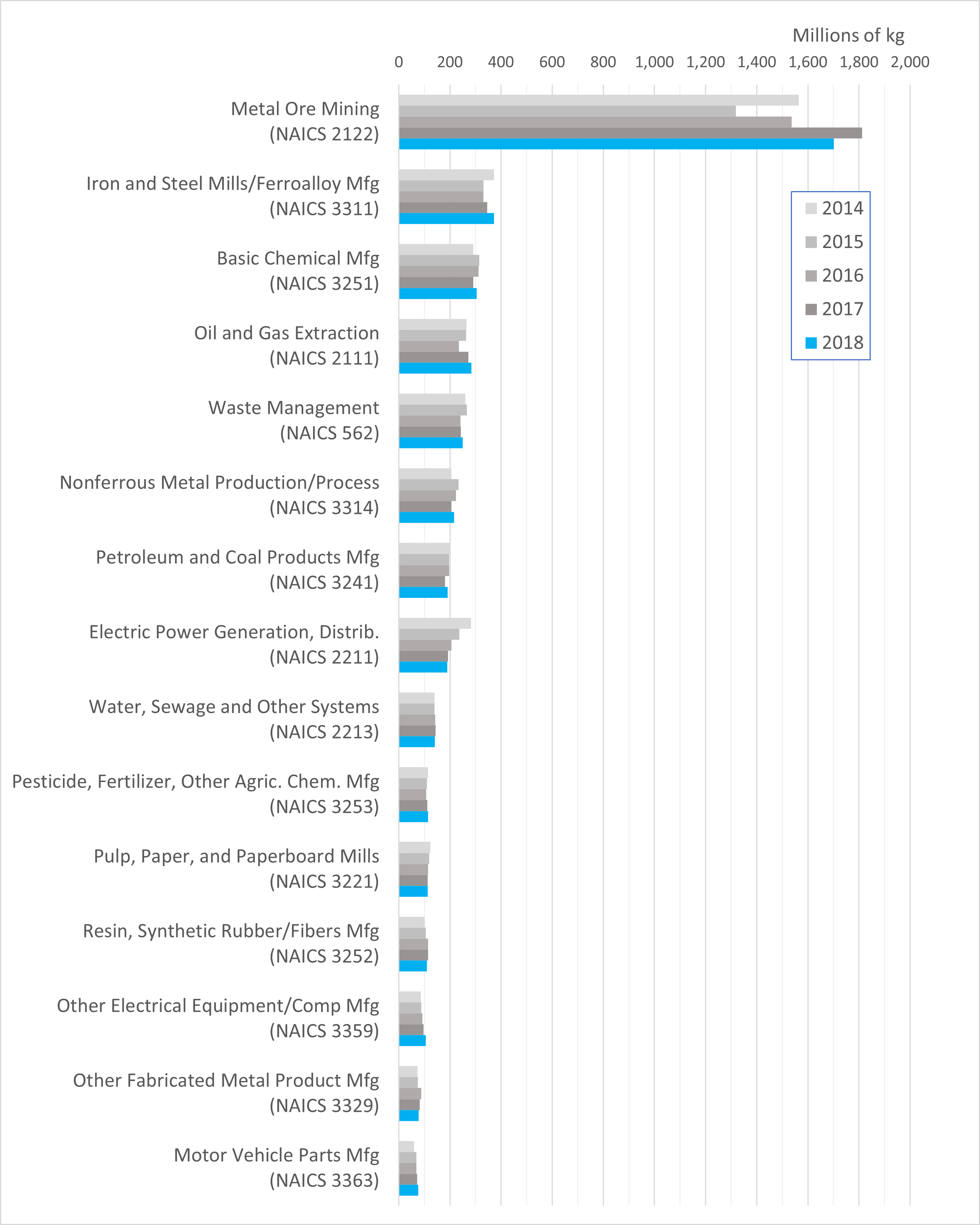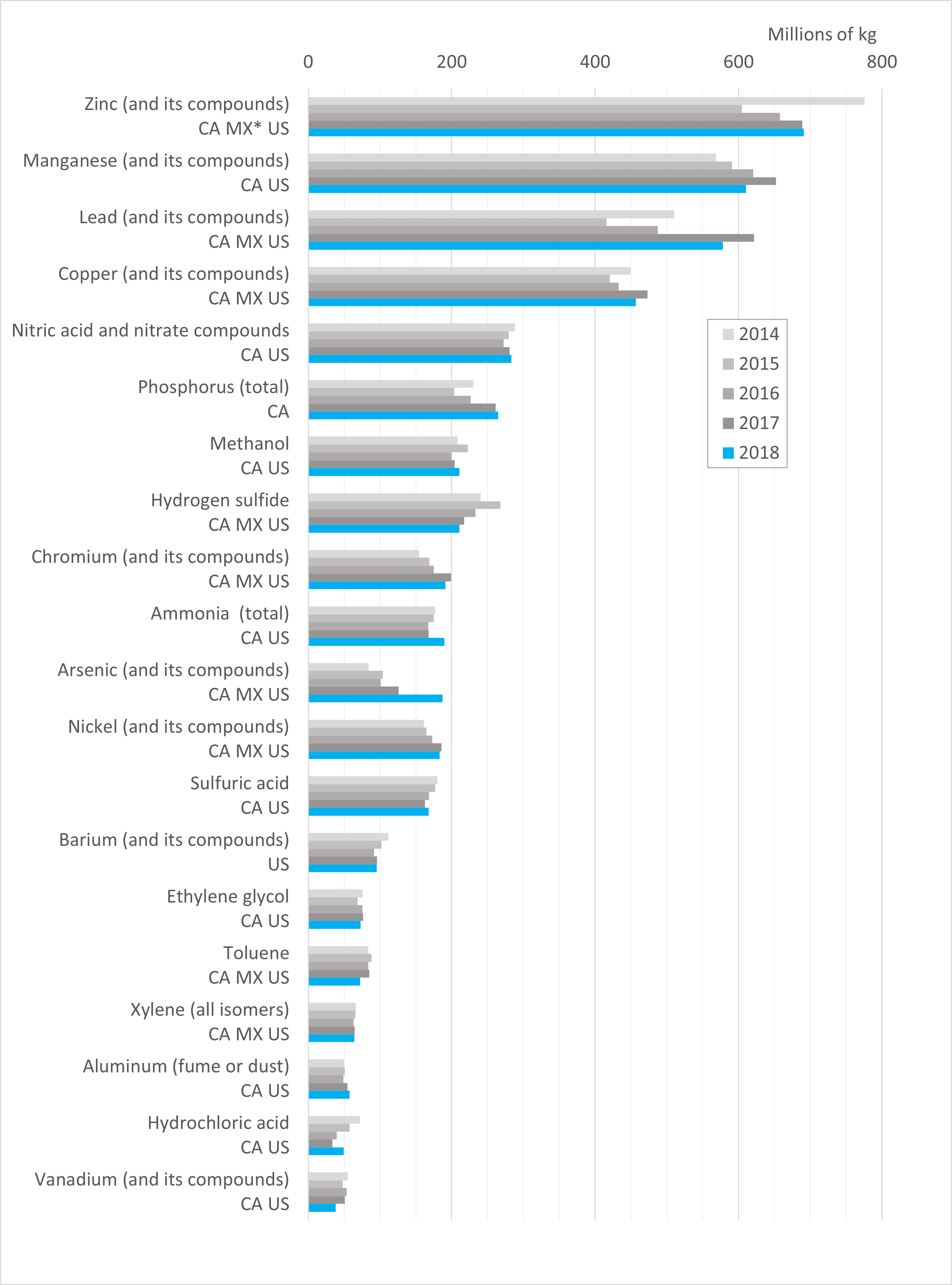1 Overview of Releases and Transfers in North America, 2014-2018
1.3 Top Industry Sectors and Pollutants
Figure 6 shows the 15 industry sectors that reported the largest proportions of releases and transfers between 2014 and 2018, with these sectors accounting for approximately 80% of the total each year.[4] It shows that the metal mining sector stands out among all others, accounting for between 35 and 50% of the North American total each year. Releases and transfers reported by most of these top sectors were relatively consistent during this period, with the exceptions of two sectors:
- The metal ore mining sector (NAICS 2122): Mexican gold and silver ore mining facilities drove the increase over this period, with releases and transfers reported in that country rising by over 2,000% (from less than one million kg in 2014 to almost 13 million kg 2018); and
- The electricity generation, transmission and distribution sector (NAICS 2211): It showed consistent reductions in total releases and transfers, driven mainly by US utilities (a decrease of 36%, from about 248 million kg in 2014 to less than 158 million kg in 2018), followed by Canadian utilities (a decrease of about 4.5 million kg, or 24%, during this period).
In all, 538 pollutants[5] were reported by North American facilities between 2014 and 2018, with the 20 substances shown in Figure 7 together accounting for approximately 88% of total releases and transfers each year. Just five of these pollutants, including four metals—zinc, manganese, lead, and copper (and their compounds)—as well as nitric acid/nitrate compounds, together accounted for between 44 and 49% of the annual totals. There were important increases in the reported amounts of some of these pollutants during this period. For example:
- Zinc compounds: There was a spike in 2014 in on-site disposals or land releases of zinc compounds by US metal ore mining facilities. This was followed by a steady increase in on-site disposals by metal mines in Canada, as well as in transfers of zinc to recycling by certain US sectors, such as motor vehicle manufacturing and iron and steel mills/ferroalloy manufacturing.
- Lead compounds: The US metal ore mining sector and, to a lesser extent, the same sector in Mexico and Canada, accounted for large increases in releases and transfers of lead compounds during this period (with US and Canadian facilities disposing of this waste on site, while Mexican facilities transferred their lead waste to “other disposal”). Two other US sectors—“other electrical equipment and component manufacturing” and “miscellaneous durable goods wholesalers”—also played a role in this increase, with both sectors transferring their lead waste to recycling.
- Arsenic compounds: The Canadian and US metal ore mining sectors also accounted for the large increase (of over 100 million kg) in on-site disposals or land releases of arsenic compounds during this period.
[4] As explained in “Understanding Taking Stock,” (PRTR Reporting Requirements), North American facilities are classified according to North American Industry Classification System (NAICS) codes. In this chapter, sectors are presented at the NAICS-4 level, except for NAICS 562: Waste Management and Remediation (or simply, “Waste Management”), due to differences among the three countries in the 4-digit NAICS codes used to represent specific activities in this sector.
[5] “Pollutants” also refers to chemical groupings (e.g., lead and its compounds). Readers are reminded that in this report, the number of pollutants refers to those reported by facilities in amounts of at least 0.0001 kg.

